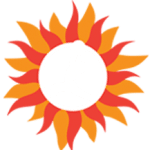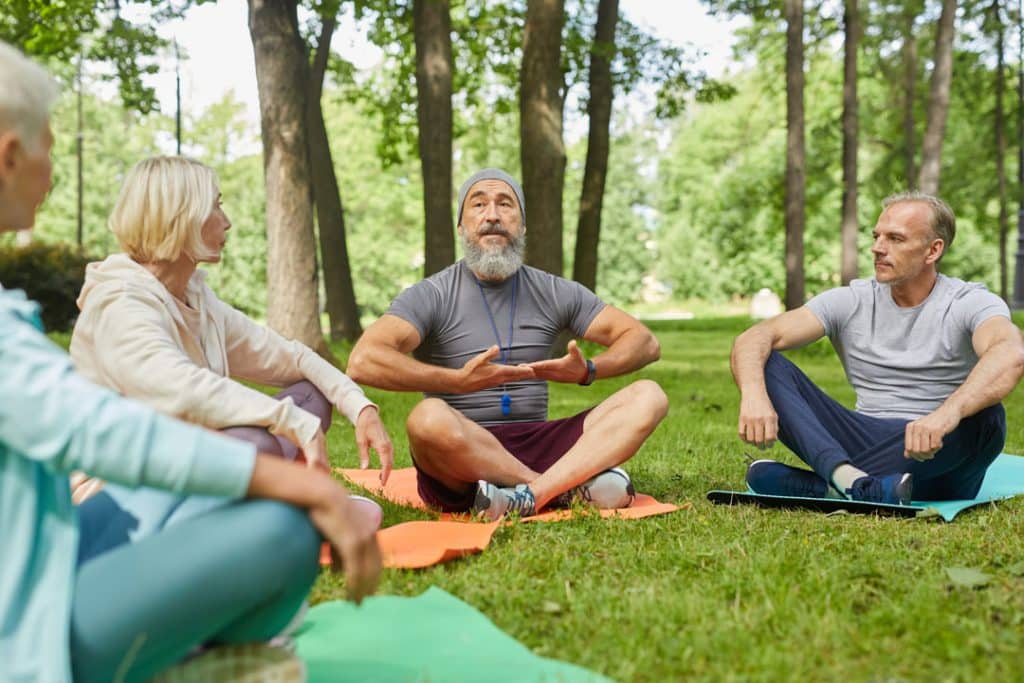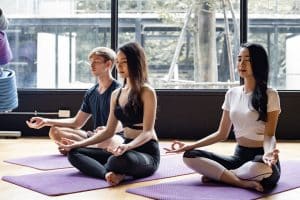If you have ever confided in a friend about your anxiety chances are you have heard the advice “You should try yoga!” at least once. I used to suffer with constant anxiety, insomnia and occasional panic attacks and would want to slap people when they suggested I try yoga or meditation. I had tried practically everything else- how could yoga be such a cure-all? Well, I am a walking example of a convert. Although it didn’t happen overnight, practicing yoga and breathwork completely changed my daily experience. I rarely have any of the issues with anxiety that I used to have.
We are currently in a time of great uncertainty which can trigger feelings of worry and stress. You probably have a vague idea that yoga is good for mental health and anxiety but unless you have sought out the information it may be difficult to determine why. The answer lies in the breath. There are many different forms of yoga- some restorative, such as Yin yoga and some more challenging and intense, such as power vinyasa. All different types of yoga focus on awareness and breathwork.
We take for granted that we know how to breathe- we have been doing it literally since birth. However, it actually isn’t as second nature as it appears to be. Some people breathe less optimally due to differences in anatomy and some out of habit. We always say that there is no “right way” or “wrong way” to do anything in yoga and this includes the breath. There are several different techniques and each one may bring a different feeling or sensation. All types of breathing have benefits but each one has a specific purpose.
We do know that when we breathe through our mouth, this activates our “fight or flight” response, meaning that the body is in a sympathetic state or “survival mode”. This type of breathing is meant for very short term, specific use. It is very useful when running away from a threat or when your body needs to get access to an intense burst of energy quickly. When your body switches into survival mode it starts to increase production of stress hormones. Mouth breathing keeps the breath shallow at the top of the lungs and dries out the mouth and nasal passages, constricting blood flow to the lungs. It increases the breathing rate which can lead to poor sleep quality. It decreases oxygen flow in the blood. All of these things can trigger feelings of unrest or anxiety.
Using nasal breathing switches the body into a parasympathetic state or “rest and digest” mode. Nasal breathing encourages deeper breathing as it uses the diaphragm to power the lungs. It increases oxygen levels in the blood and decreases the breathing rate. Breathing through the nose is like having a built in filter as it sterilizes and humidifies the air before it goes into your lungs. All of these things lead to better sleep quality which lowers stress.
Once you have started to really master breathing in and out through your nose daily you can start to practice other breathing techniques that will help ease stress and anxiety.
Box breath or “four square breathing” is a great technique to try that is even used by Navy Seals. Start by sitting in a comfortable seat. Breathe in through your nose while counting to 4. Feel the air fill your lungs, hold for 4. Begin to slowly exhale for a count of 4. Then hold for an additional count of 4. Repeat these steps for about 3 minutes or until you start to feel a sense of calm.
Deep belly breathing stimulates your relaxation response, which reduces the heart rate and lowers blood pressure. The best way to practice this by simply lying on the floor with one hand on the belly and another on your chest. As you breathe in you should feel your belly expand into your hand, the hand on your chest should not move. As you exhale you will feel your belly fall. Try to make your exhale a bit longer than your inhale.
A third way to reduce anxiety is to simply be present and focus on the breath. While lying down or sitting in a chair and picture the breath moving in, around and out of your body. If it helps, you can think of some words to say to help you focus. Try saying “I am” as you inhale and “Calm” as you exhale. Doing this for even 2 minutes a day could drastically improve your sense of well being.
Remember, the lungs are organs, not muscles. So, when you engage your diaphragm and surrounding muscles (intercostals) while doing these exercises, you intensify your breathing capacity. Strengthening the muscles that control your breathing can make your lungs healthier which in turn will boost your immune system. You can incorporate nasal breathing into your yoga asana practice in order to bring a deeper sense of presence. By concentrating on the breath, it can help your mind from drifting into worrying about the future or ruminating in the past. Like everything else, it takes practice. The more often you are able to maintain awareness during your yoga session, the more you will likely be able to take it off your mat and into the real world.



